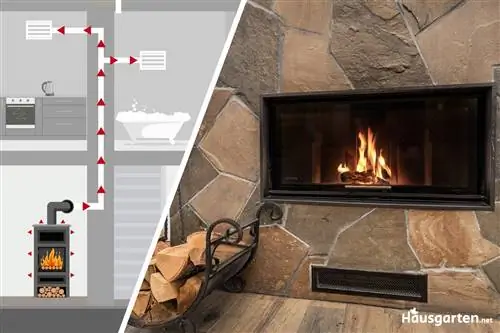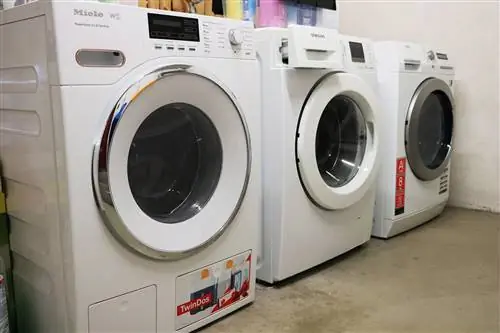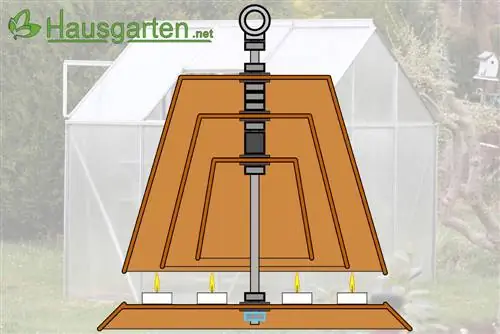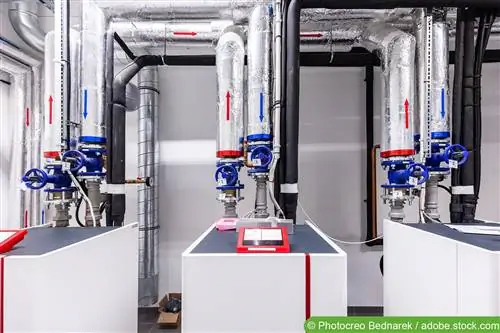- Author admin [email protected].
- Public 2023-12-17 03:39.
- Last modified 2025-01-24 12:45.
With a fireplace, many people fulfill their dream of cheaper heating and greater living comfort at the same time. You can find out how the right oven can heat several rooms at the same time and what you need to consider in our guide.
A fireplace provides pleasant warmth and also creates a cozy atmosphere. With the right technology, it can even heat several rooms. We show how it can work.
Heating options
Heating with a fireplace has several advantages. Including heating several rooms. This works in two ways:
- ductable fireplace stoves
- water-powered fireplaces
Which variant is more suitable depends on the local conditions.
Ductable fireplaces
In this variant of the fireplace, air is heated and passed through pipes to other rooms. It is always useful when there is no central heating.
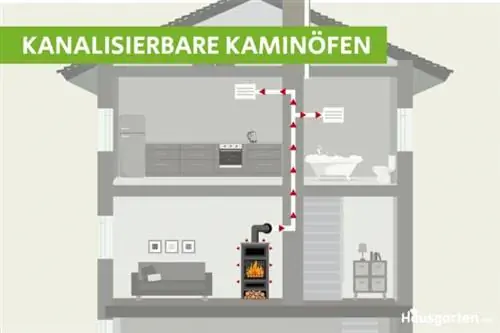
The warm air from the oven is distributed in a targeted manner through the pipes and a fireplace fan. This means that heating takes place comparatively quickly, which makes this variant efficient.
Requirements for warm air from the fireplace
If this solution is chosen to heat several rooms, a chimney sweep must first check the conditions. This can decide whether there is anything against the implementation and what structural changes are necessary.
On the one hand, the heated air must be able to reach the adjacent rooms in a targeted manner without causing too much loss of temperature. On the other hand, there must be no danger from the cables.
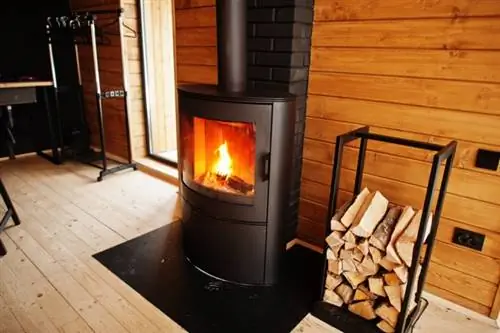
Which measures need to be carried out and which permits may be required must be decided or communicated by a stove manufacturer. Other names for this profession are:
- Fireplace builder
- Air heating engineer
- Hafner
This is necessary for professional implementation in any case. In addition to the heating function, the smoke produced during combustion must be correctly dissipated. This requires a corresponding chimney.
Water-powered fireplaces
Water-powered fireplaces can be connected to central heating. The heated water is distributed to other rooms via the heaters.
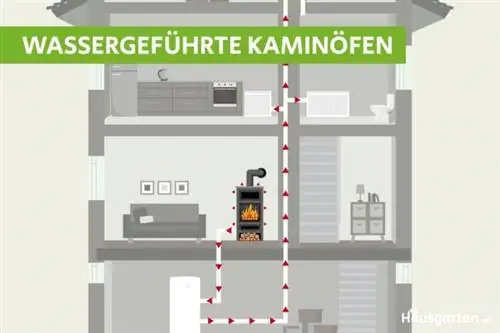
Theadvantage of this is that heated water has a comparatively high storage capacity. So it stays warm longer.
Thedisadvantage of it is that it also takes longer to heat up than air. Problems can also arise if one of the pipes is leaking and water escapes.
In addition, a heater cannot warm the room as quickly as by introducing warm air. Nevertheless, due to the long storage capacity of the water, it is an effective and inexpensive method of heating.
This is especially true if there is already central heating. The connection is easy and requires little effort.
Note: Because water-based fireplaces have a lower temperature loss when the water is passed on, more rooms can be heated equally than with air.
Number of rooms
If only the living room and the kitchen or two adjacent rooms are to be heated with a fireplace, pipes are not necessary.
Here it is sufficient to open the connecting door for the duration of heating. In addition, the fireplace should be large enough to generate enough heat for the number of square meters.
Installing a fireplace: regulations
Whether the fireplace is intended to heat one or more rooms, various regulations must be adhered to in each case. These include:
- Fireplace standard must correspond to DIN 18891 or the European standard EN 13240
- Safety distances from walls and combustible materials must be maintained
- Deduction and fine dust regulations must be taken into account
The respective regulations and regulations to be complied with can be found in the Federal Immission Control Ordinances (BImSchV) and the Fire Protection Ordinance. In addition, there are municipal requirements and differences in the respective fireplace models.
For example, the safety distance to the wall depends on the stove selected. The information on this can be found in the manufacturer's operating instructions.
Unfortunately there is no general information about the guidelines and it is difficult and time-consuming for laypeople to find the right solution for the individual case.
Take advice
Mistakes when installing a fireplace can quickly become very expensive. On the one hand, this can result in fines being imposed. On the other hand, the correction involves effort in terms of work and increased expenses.
In addition, falling short of safety distances can, among other things, cause damage that must be repaired or even pose a significant danger.
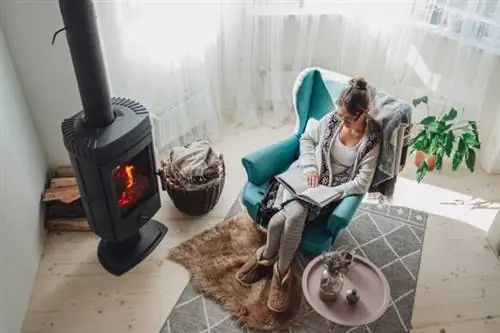
Due to the complex and sometimes regionally different regulations, professional advice should be provided on site. Here you can find the right solution for your individual needs.
Possible problems can be prevented or solved in advance.
Tip:
The right contact person for this is the district chimney sweep. This also fulfills another function later.
Have the fireplace removed
Anyone who installs a fireplace must also have it properly removed. This confirms whether all regulations have been met or whether there are dangers posed by the oven or the pipes.
The district chimney sweep is responsible for this. The costs for this are 50 to 100 euros.
Fireplace size
If several rooms are to be heated with one fireplace, the size of the stove plays a crucial role.
It must be powerful enough to cover the desired area. It should also be located centrally in the house or apartment in order to achieve even distribution of heat.
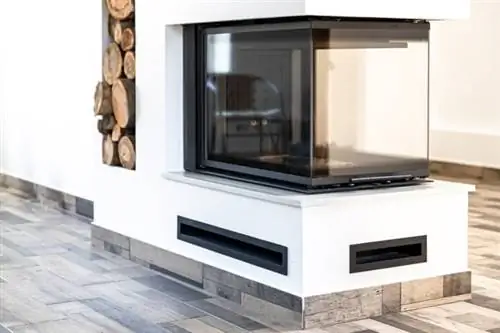
If this is not possible, several smaller fireplaces can be installed, each heating two to three rooms.
Potential disadvantages
Heating several rooms with one fireplace is cheaper and more comfortable. It can serve as an alternative when heating costs increase or additional heat is needed.
However, it also has potential disadvantages. This means that heating in other rooms is often slower than with central heating.
The heat cannot be regulated as precisely as with other variants. In addition, a fireplace requires more effort in terms of procurement of fuel, lighting, cleaning and maintenance by a chimney sweep.
The advantages should therefore always be weighed against the disadvantages in each individual case.

